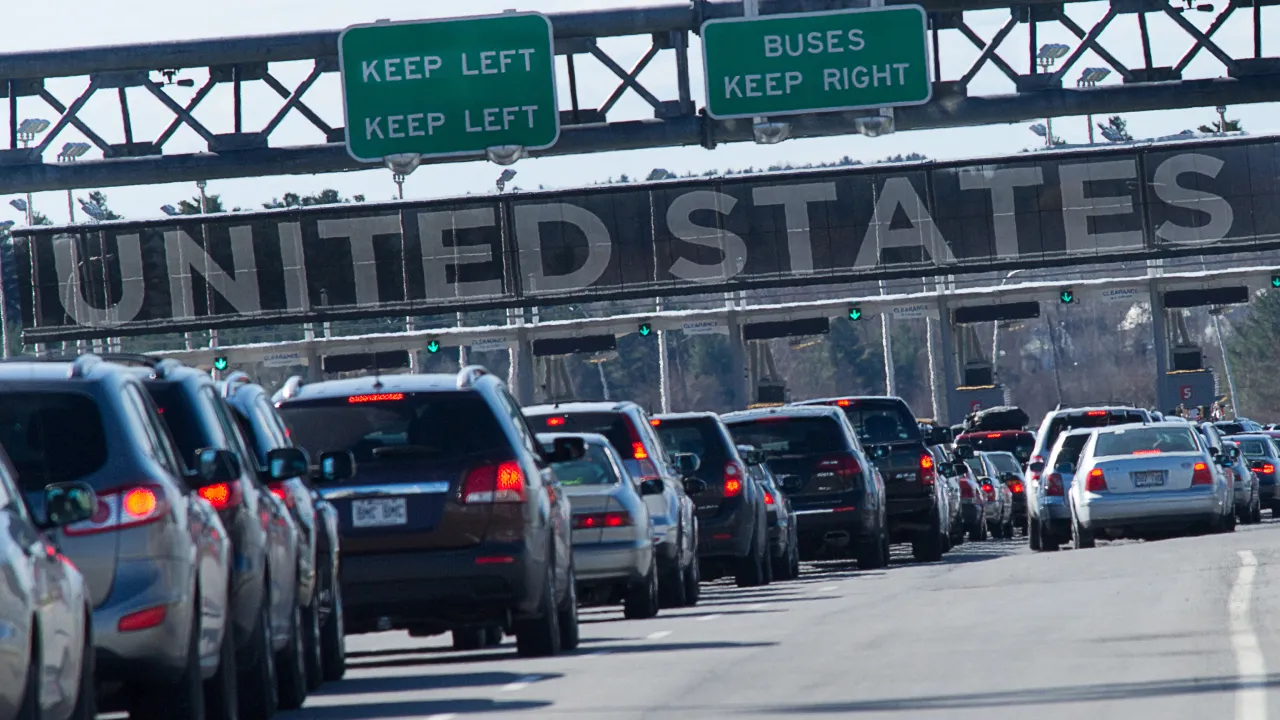What Do Migrants Get After Crossing the Border?
What Is the Difference Between a Migrant, a Refugee, and an Asylum Seeker?

Relocating to America can open the door to new freedoms and a better quality of life. There are systems in place to help support certain migrants who relocate to the United States through the proper channels.
Certain migrants may be eligible to utilize programs designed to help ease the transition to a new life. It all depends on how and why you enter the United States. Here’s what you can expect after crossing the border.
What Is the Difference Between a Migrant, a Refugee, and an Asylum Seeker?
A migrant is a person who chooses to relocate to the United States from another country. It can refer to any number of people. Someone who arrives on a family-based or spousal green card would be a migrant. The term migrant can also refer to someone who temporarily lives and works in the United States, like a migrant worker.
A refugee is someone who has experienced a disaster or emergency in their home country that has displaced them. Refugee seekers come to the United States seeking a safe place to live when they can no longer live in their home country or don’t have a home to return to. Some refugee seekers attempt to seek refuge in the United States because they have friends, family, or prospects in the U.S. that may help them get back on their feet.
An asylum seeker is someone who arrives in the United States seeking protection from an oppressive government or authority figure. There are countries where things that are perfectly legal and normal in the United States can be punished with disproportionate consequences by oppressive power structures. For example, there are countries where being homosexual is considered a severe crime. In the United States, gay people enjoy all the same rights and freedoms as heterosexual people.
The United States may provide asylum to people who may be subject to severe persecution or to people who have helped the United States military during an operation in their home country. However, being allowed to enter the country at the border does not automatically grant an individual asylum.
What Do Migrants Get When Crossing the Border?
Migrants do not get anything when crossing the border unless they’re entering the United States with permission. Refugees may receive special privileges upon their documented and expected arrival.
Migrants get detained and deported when crossing the border if they arrive without a visa or another type of specific permission to enter the country. You should not attempt to cross the border without documentation (i.e. any method of entry that doesn’t involve passing through a port of entry and being permitted to enter by a border agent or the Department of Homeland Security). If you do, it’s highly unlikely that you will receive refugee or asylum status.
Border patrol agents at the southern border, such as Texas, heavily monitor traffic into America from Mexico. It doesn’t matter if the people crossing the border hold Mexican citizenship or are coming from a country eligible for refugee programs.
Customs and Border Protection (CBP) and the federal government consider anyone who enters the United States without first obtaining proper permission at a recognized border crossing to be entering the country without proper documentation, even if they have a valid reason. This makes them eligible for immediate deportation and a ban on re-entering the United States for five years.
Anyone who comes to the United States via the U.S.-Mexico border, including migrants from countries like Nicaragua, Venezuela, El Salvador, Honduras, Cuba, Haiti, and Guatemala, must first make a formal asylum claim. That claim must be approved before a migrant can cross the American border. CBP recommends that migrants seeking asylum status apply through an app and wait to be granted permission to approach the border.
What Do Refugees Get After Crossing the Border?
United States immigration officials understand that refugees have often lost everything. They’re aware that refugees won’t enter the United States with the money and resources they need to establish themselves and begin a new life.
Refugees who are admitted into the United States with a fully documented refugee status will receive resettlement assistance and subsidized benefits for the beginning of their stay in the United States.
Reception and Placement Assistance
Reception and Placement Assistance (R&P) is the process of matching a refugee (or family of refugees) with a skilled agency that can help them meet their immediate needs and establish themselves within the United States. This assistance doesn’t come directly from the government. The government enlists the help of an approved nonprofit resettlement agency to guide refugees through the process.
Refugees will receive guided R&P assistance for the first three months of their stay in the United States. After that period ends, refugees may be eligible for other programs and benefits that are more self-managed.
Resettlement Cash
Refugees are individually issued a one-time payment of $2,375 from the Department of State to cover resettlement expenses. Refugees are also paired with a non-profit refugee resettlement agency, which may provide additional financial assistance. This money is usually allocated on behalf of the refugee by the non-profit organization.
About $1,275 of the total is used to directly fund housing, food, clothing, and other immediate needs. The rest of the cash assistance goes to the non-profit for the services they provide in assisting refugees and managing their cases throughout the resettlement process.
Some states provide a lump sum of cash directly to refugees who are resettled in their state if their budgets allow them to do so, but this isn’t always the case. States offer anywhere from $500 to $900 as a lump sum of cash that refugees can use as they see fit without any oversight or approval. This sum is separate from the Department of State resettlement cash.
Temporary Financial and Medical Assistance
Some states allow refugees to participate in Temporary Assistance for Needy Families (TANF) or Supplemental Nutrition Assistance Program (SNAP), also known as food stamps, for a limited period of time after they arrive.
States may allow refugees to temporarily utilize state-subsidized medical care programs for people who cannot afford private health insurance. The duration of health insurance is usually temporary. Elderly refugees may be able to receive state-subsidized medical care for longer.
Social Security/Retirement Benefits
If you enter the United States as a refugee and you’re disabled or near retirement age, you may be able to collect Social Security benefits like Supplemental Security Income (SSI). These benefits are only available to refugees who cannot reasonably be expected to work a full-time job.
Assistance With Job Placement
Most financial assistance provided to refugees is intended to be temporary. Refugee assistance programs often help refugees find suitable job placements in the United States. One of the primary goals of assistance organizations is to help refugees become financially self-sufficient. They work with refugees to discover their qualifications, help them create resumes, and show them how to apply for jobs in relevant fields.
The Ability To Apply for Lawful Permanent Resident Status
Some eligible refugees can apply for lawful permanent resident status after living in the United States for one year. If a refugee meets all of the qualifications and is self-sufficient in the United States, they’re a good candidate for a green card. A green card can become a pathway to U.S. citizenship for those who choose to pursue full citizenship.
What Do Asylum Recipients Get?
Asylum recipients are eligible to receive many of the same benefits and types of assistance as refugees upon approval of their asylum application. While their application is pending, they may be eligible for an employment authorization document or work permit. The financial circumstances of an asylum seeker may be different from the financial circumstances of a refugee.
An asylum seeker may have their own funds they can bring to the United States with them. If they work for a multinational corporation, they may also be able to transfer their job to the United States. No two situations are exactly the same.
Some asylum seekers may receive enhanced protection if there is a direct threat to their life or wellbeing. The U.S. government doesn’t fully detail what these protections entail because explaining them openly may make asylum recipients vulnerable. The idea is to allow them to enjoy their privacy and safety as much as possible after they’ve relocated to the United States. An asylum officer can answer specific questions about protection once an asylum claim has been granted.
Do You Need Help Seeking Refugee or Asylum Status in the United States?
U.S. immigration policy only allows a limited number of asylum and refugee claims to be granted every fiscal year. The Trump administration made the process very difficult by enacting Title 42 during the pandemic. The Biden administration continues to make the refugee process difficult by changing the requirements for refugee eligibility.
Whether you’ve been wondering, “What do migrants get after crossing the border?” or you’re already in the process of relocating to the United States, it’s important to clearly demonstrate your case if you’re seeking safety and protection in the U.S. Contact the immigration law team at Cohen, Tucker + Ades for a consultation to review your options and determine the best way to move forward with your claim.
Sources:
Can Biden’s New Asylum Policy Help Solve the Migrant Crisis? | Council on Foreign Relations
CBP One™ Mobile Application | U.S. Customs and Border Protection
Office of Refugee Resettlement (ORR) | The Administration for Children and Families
Seeking Protection: How the U.S. Asylum Process Works | Council on Foreign Relations
Not sure which option is right for you? Request a confidential consultation today.

